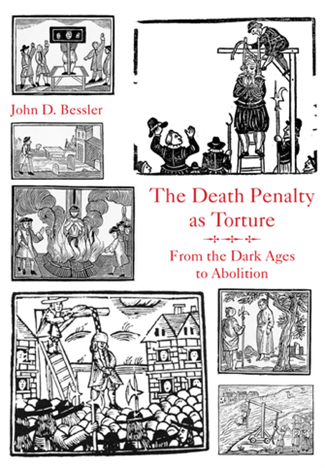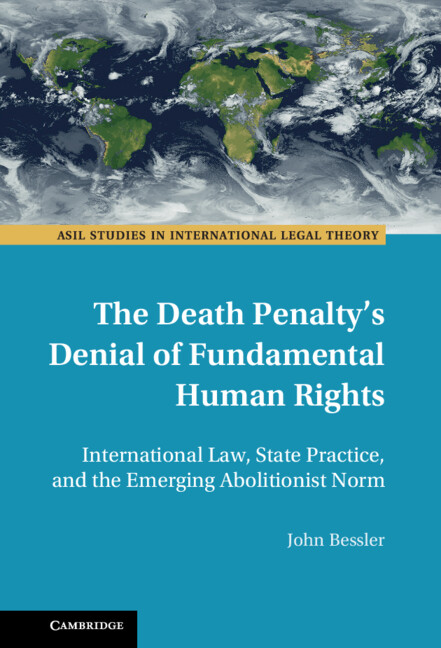A Torturous Practice: Prohibiting the Death Penalty’s Use Through a Peremptory Norm of International Law
Posted:
Time to read:
Executions used to be the standard, or usual, punishment for a wide variety of offenses. If one examines ancient laws, the death penalty was the customary punishment for many crimes, from the most heinous to the relatively minor. The world’s earliest legal codes are replete with references to capital punishment, with the Babylonian Code of Hammurabi making twenty-five different offenses punishable by death. The term “draconian” is itself derived from Draco’s seventh-century BC Athenian legal code. Draco’s laws were said to be “written not in ink but in blood.”
But today, more than two-thirds of the world’s countries have either abolished capital punishment or no longer use it in practice. The UN General Assembly has passed nine separate resolutions calling for a global moratorium on executions, the first in 2007 when 104 countries voted in favour (with 54 voting against and 29 abstaining) and the ninth in December 2022 when 125 countries voted in favour (with 37 voting against and 9 abstaining). The UN votes show anti-death penalty sentiment growing steadily worldwide, even though executions stubbornly persist, with Singapore executing a 46-year-old man, Tangaraju Suppiah, in April 2023, after he was convicted of trying to traffic 2.2 pounds of cannabis.
Many courts and national constitutions already forbid executions. South Africa’s Constitutional Court declared capital punishment unconstitutional in 1995,[i] and Germany’s constitution has barred executions since 1949. In November 2022, Germany thus fittingly hosted the 8th World Congress Against the Death Penalty, where more than twenty scholars from around the globe called for the death penalty to be recognized as a violation of a jus cogens norm of international law. I was among them.
Jus cogens norms are peremptory, non-derogable and enjoy the highest status within international customary law. Already, it is well settled that a nation-state violates jus cogens—a concept recognized in Article 53 of the Vienna Convention on the Law of Treaties (1969)—if, for example, it practices, encourages, or condones genocide, slavery, murder, or torture.[ii] As I wrote in The Death Penalty as Torture (2017), the death penalty itself is a grotesque violation of human rights and should be stigmatized as a torturous practice.
 International law should categorize the death penalty as torture per se, with torture long considered to violate jus cogens, in part because international conventions absolutely bar it. The death penalty, in fact, always and inevitably inflicts severe pain and suffering rising to the level of torture. That’s because capital charges and death sentences systematically threaten individuals with death (and, when death warrants against individuals are carried out, kill), with torture—prohibited by various domestic laws in addition to the bar in international law—considered to be the aggravated form of cruel, inhuman, or degrading treatment or punishment.
International law should categorize the death penalty as torture per se, with torture long considered to violate jus cogens, in part because international conventions absolutely bar it. The death penalty, in fact, always and inevitably inflicts severe pain and suffering rising to the level of torture. That’s because capital charges and death sentences systematically threaten individuals with death (and, when death warrants against individuals are carried out, kill), with torture—prohibited by various domestic laws in addition to the bar in international law—considered to be the aggravated form of cruel, inhuman, or degrading treatment or punishment.
After the Nazi atrocities, the Holocaust and World War II, prohibitions of torture justifiably proliferated, with Article 17 of the Geneva Convention Relative to the Treatment of Prisoners of War (1949), better known as the Third Geneva Convention, prohibiting both physical and psychological torture. Article 17 provides: “No physical or mental torture, nor any other form of coercion, may be inflicted on prisoners of war to secure from them information of any kind whatever.” Both Article 5 of the Universal Declaration of Human Rights (1948) and Article 7 of the International Covenant on Civil and Political Rights (1966) also explicitly forbid torture as well as cruel, inhuman or degrading treatment or punishment.
The targeted prohibition of torture in the Third Geneva Convention and the other general prohibitions of torture were later replicated and broadened in the UN Declaration on the Protection of All Persons from Being Subjected to Torture and Other Cruel, Inhuman or Degrading Treatment or Punishment (1975) and the UN Convention Against Torture and Other Cruel, Inhuman or Degrading Treatment or Punishment (1984). The widely ratified UN Convention Against Torture specifically defines torture as “any act by which severe pain or suffering, whether physical or mental, is intentionally inflicted on a person” for a prohibited purpose, namely, obtaining information or a confession; as punishment; to intimidate or coerce; or to discriminate. It contains a “lawful sanctions” carve-out, but many countries and American states now explicitly make executions unlawful.
I believe that what constitutes torture must be determined by an act’s objective characteristics, not by how state officials characterize an act. For too long, torture and capital punishment have been considered in separate legal silos. Centuries ago, civil law countries made use of judicial torture to extract confessions, utilizing barbaric instruments of torture (e.g., waterboarding, the thumbscrew and the rack) to secure what, today, would be plainly classed as coerced confessions. “Torture,” legal historian John Langbein explains, “was part of the ordinary criminal procedure, regularly employed to investigate and prosecute routine crime for the ordinary courts.”[iii] Before the Enlightenment, capital punishment was not even questioned, with death sentences treated, in effect, as something other than torture. In the twenty-first century, however, torture has a much broader meaning than that employed in the seventeenth and eighteenth centuries.
Only in the second half of the eighteenth century did the world’s anti-death penalty movement begin in earnest, with Cesare Beccaria’s On Crimes and Punishments (1764) planting the seeds for today’s global movement—one led by the World Coalition Against the Death Penalty, the International Commission Against the Death Penalty and non-governmental organizations (NGOs) such as Amnesty International and Ensemble Contre la Peine de Mort (ECPM). Echoing the non-refoulement principle found in Article 3 of the UN Convention Against Torture that protects individuals from being returned to countries where they’d be tortured, many nations now refuse to extradite individuals facing a potential capital charge elsewhere.
 In The Death Penalty’s Denial of Fundamental Human Rights (2023), I argue that the death penalty violates human dignity and universal human rights—to life, to be free from torture and cruelty, to be treated in a nonarbitrary, nondiscriminatory manner. I point out that every death penalty regime makes use of credible death threats—the kind of threats that, if used in custodial interrogations, by offenders, or in other contexts, are already prohibited by law. In fact, the making of death threats is ordinarily treated as tortious and criminal conduct, with mock executions already considered a classic example of psychological torture.
In The Death Penalty’s Denial of Fundamental Human Rights (2023), I argue that the death penalty violates human dignity and universal human rights—to life, to be free from torture and cruelty, to be treated in a nonarbitrary, nondiscriminatory manner. I point out that every death penalty regime makes use of credible death threats—the kind of threats that, if used in custodial interrogations, by offenders, or in other contexts, are already prohibited by law. In fact, the making of death threats is ordinarily treated as tortious and criminal conduct, with mock executions already considered a classic example of psychological torture.
American jurists already define “psychological torture” as occurring when crime victims are made aware of their impending deaths but are helpless to prevent those deaths. As the Alabama Supreme Court has held: “Psychological torture can be inflicted where the victim is in intense fear and is aware of, but helpless to prevent, impending death.”[iv] That legal description—from a court in a death penalty state, no less—describes the circumstances faced by death row inmates, who often spend decades living under continuous threats of death before execution or exoneration. Threats or capital charges can lead to false confessions, and they inexorably cause anguish and torment to the accused, the condemned and family members.
The UN Convention Against Torture absolutely bars torture, including in wartime, while the International Covenant on Civil and Political Rights (ICCPR) purportedly allows death sentences for the most serious crimes. In Europe, the inherent conflict between capital punishment and the absolute prohibition of torture has been resolved, however. In particular, Protocols 6 and 13 to the European Convention on Human Rights now forbid executions in peacetime and wartime, respectively. In truth, death sentences and executions are totally incompatible with the law’s strict prohibition of torture because an immutable characteristic of the death penalty is that it utilizes official death threats.
Two of its provisions show that the ICCPR—adopted in 1966—was never intended to perpetually allow death sentences. “In countries which have not abolished the death penalty,” Article 6(2) of the ICCPR begins, making clear that abolition—not the continuation of executions—was the ICCPR’s goal. Tellingly, Article 6(6) of the ICCPR proclaims: “Nothing in this article shall be invoked to delay or to prevent the abolition of capital punishment by any State Party to the present Covenant.” Thus, the ICCPR is not an irrevocable “license to kill,” as James Bond might say.
Many jurists have already seen the death penalty as a torturous practice. As the California Supreme Court wrote in People v. Anderson (1972): “The cruelty of capital punishment lies not only in the execution itself and the pain incident thereto, but also in the dehumanizing effects of the lengthy imprisonment prior to execution during which the judicial and administrative procedures essential to due process of law are carried out.” “Penologists and medical experts agree,” it emphasized, “that the process of carrying out a verdict of death is often so degrading and brutalizing to the human spirit as to constitute psychological torture.”[v] Amnesty International’s Declaration of Stockholm (1977) itself labeled executions “the ultimate cruel, inhuman and degrading punishment.”
If the world is to achieve truly universal human rights, then everyone—the innocent and the guilty alike—must be protected from acts of torture and cruelty. Ninety countries have ratified or acceded to the ICCPR’s Second Optional Protocol aiming at the death penalty’s abolition, so capital punishment is knocking on death’s door. At long last, the world may finally be opening its eyes to what Albert Camus had to say about the punishment’s barbarity. As Camus sagely observed: “Capital punishment is the most premeditated of murders, to which no criminal’s deed, however calculated, can be compared. For there to be equivalence, the death penalty would have to punish a criminal who had warned his victim of the date at which he would inflict a horrible death on him and who, from that moment onward, had confined him at his mercy for months. Such a monster is not encountered in private life.”[vi]
 |
John Bessler teaches at the University of Baltimore School of Law and the Georgetown University Law Center. He is the author of Cruel and Unusual: The American Death Penalty and the Founders’ Eighth Amendment (2012), The Death Penalty as Torture: From the Dark Ages to Abolition (2017) and The Death Penalty’s Denial of Fundamental Human Rights: International Law, State Practice, and the Emerging Abolitionist Norm (2023). |
[i] The State v Makwanyane and Another CCT3/94 [1995] ZACC 3 (Constitutional Court of South Africa).
[ii] Restatement (Third) of Foreign Relations Law § 702 & cmt. n (1987).
[iii] John Langbein, Torture and the Law of Proof (University of Chicago Press 2012) 3.
[iv] Key v State of Alabama (2004) 891 So.2d 384 (Supreme Court of Alabama).
[v] People v Anderson (1972) 6 Cal.3d 628 (Supreme Court of California).
[vi] Albert Camus, Resistance, Rebellion and Death (Justin O’Brien tr, Modern Library 1963) 151.
Share:
